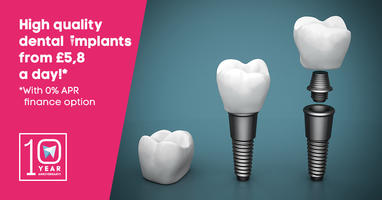Inlays
Inlays and onlays are both forms of indirect restoration.
Inlay
When a tooth is too damaged to be healed by conservative dentistry, but not so badly as to need a crown, then an inlay is in order. Conservative dentistry, aimed at restoring or conserving the tooth, includes fillings and cleaning of the teeth and plaque removal. If the decay or fracture of the tooth is too severe, then an ordinary filling might damage the tooth further. An inlay provides the necessary extra structure. A tooth that is damaged in such a way also needs a post because a simple composite or amalgam filling may be dislodged when chewing.
Inlays are typically made of gold or porcelain, and cover a much wider area than normal fillings. They are cut to fit the shape of the decay or fracture, thus seamlessly closing the gap. Once fitted, decay does not have a chance to re-enter the vulnerable, damaged tooth. This procedure is significantly more expensive than a normal filling, but the amount of damage usually warrants the expense. Also, an inlay has significantly better resistance to the force with which you bite food, the chance of recurrent decay is virtually none at all, the contours usually fit much better into the tooth itself, and is much easier to clean then a simple filling.
 Onlay
Onlay
An onlay is needed when a larger portion of the tooth is damaged, but enough healthy structure remains to conserve the tooth. If the biting area of the tooth is damaged an onlay might be your best restorative option, otherwise a crown would be needed to make sure the tooth does not get further infected, and the preparations needed to make the crown would actually eliminate the cusps of the tooth. Onlays are a protective option that allow the tooth to be saved.
All indirect restoration techniques involve materials such as porcelain or gold, and are fabricated outside of the mouth of the patient. Of the materials used, gold has a better track record, but the trial isn’t actually fair; gold has been used for a much longer time then porcelain. The surgical porcelains used in modern dentistry can now last just as long as gold.
Dental inlays and onlays are usually made in dental laboratories. As time is a factor in the making of the actual dental work, patients are first fitted with a temporary structure which will protect the tooth until the permanent solution has been made. The porcelain inlays are virtually invisible, as they are the same colour as your tooth. Porcelain and gold are not subject to the same changes in texture and shape that amalgam is, and will not enlarge or decrease in size, and thus discomfort is minimised. Sensitive teeth can be made much less sensitive to temperature or food, as there will be a barrier of material protecting the nerve. Dental inlays and onlays can actually strengthen the tooth by as much as 75%. And the most important thing about indirect restoration is that, unlike the situation with crowns or implants, this treatment allows you to keep as much of your tooth as possible.
Dental inlay and onlay benefits
There are a number of positive points that are associated with dental inlays and onlays. Primarily they are very useful in the treatment of tooth decay as well as getting rid of sensitivity of the teeth and helping prevent tooth loss. Other benefits of dental inlays and onlays include the following :
-
The ability to choose natural coloured inlays or onlays to make them "invisible", so that your smile will remain attractive.
-
As the inlays and onlays are generally not composed of metal, like conventional fillings, they will not change in shape or size when subjected to changes in temperature.
-
More of your tooth is maintained than with a traditional filling, which often makes the procedure more appealing and popular.
-
Dental inlays and onlays can strengthen the tooth in question by around 75% thanks to the process that goes into producing them.
Click here to get further information about our our Practice Plan.
Change your life once and for all with our top quality dental implants ‐ from the price of £5,8 per day only and no interest to pay.*
The offer is valid until withdrawal.
Registration
Register for dental checkup!
-
Why Are My Teeth Moving?
- 2019. May 15
-
Nanotechnology for Better Dental Implants
- 2019. May 05
-
Foods to Prevent Dental Cavity
- 2019. April 25
-
Dental Implant FAQ 3.
- 2019. April 15
-
Dental Implant FAQ 2
- 2019. April 05

